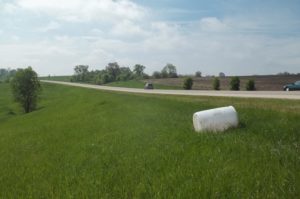The Comprehensive Environmental Response, Compensation and Liability Act, aka: Superfund or CERCLA, accomplished the following:
- Provided broad Federal authority to respond directly to releases or threatened releases of hazardous substances that may endanger public health or the environment.
- Enabled revision of the National Contingency Plan, which provides the guidelines and procedures needed to respond to releases and threatened releases of hazardous substances, pollutants, or contaminants.
- Directed the USEPA to establish reporting quantities for all hazardous substances.
The term “hazardous substance” is defined in CERCLA Section 101(14) and are listed at 40 CFR 302.4. The hazardous substance list does not contain any previously unlisted substances, instead it includes substances that are listed or designated under other environmental statutes. They include:
- All hazardous air pollutants (HAPs) listed under Section 112(b) of the Clean Air Act (CAA). Radionuclides are hazardous substances because EPA designated them generically as hazardous air pollutants under Section 112(b) of the Clean Air Act.
- Even though the source of their listing is the Clean Air Act, releases of radionuclides to all media, not just to air, are covered by CERCLA’s reporting requirements.
- Toxic pollutants that are subject to pretreatment standards under Section 307(a) of the Clean Water Act (CWA) and toxic pollutants that present an imminent danger to public health when discharged to waters of the United States as designated under Section 311(b)(2)(A) of the Clean Water Act.
- All Clean Water Act hazardous substances are CERCLA hazardous substances, but only some CERCLA hazardous substances are Clean Water Act hazardous substances.
- Wastes that are regulated as listed and/or characteristic hazardous wastes under the Resource Conservation and Recovery Act (RCRA). This includes thousands of hazardous wastes that are not specifically listed but that exhibit one or more of the characteristics of ignitability, reactivity, corrosivity or toxicity. A material is considered to be a release of a CERCLA hazardous substance if the material was a waste prior to release, or if the substance is not cleaned up for reuse and thus must be disposed of as a RCRA hazardous waste after release.
- Any element, compound, mixture solution or substance designated under Section 102 of CERCLA that may present substantial danger to public health or welfare or the environment.
- Any imminently hazardous chemical substance or mixture that EPA has taken action against under Section 7 of the Toxic Substances Control Act (TSCA). Any hazardous chemical substance or mixture that EPA has taken action against under this Act would automatically become a hazardous substance. To date, EPA hasn’t designated any hazardous substances under the Toxic Substances Control Act.
What’s interesting is that under the Hazardous Material Regulations, PHMSA/USDOT has its definition of a Hazardous Substance (read: The PHMSA Definition of a Hazardous Substance). The PHMSA definition refers to the Hazardous Substance list maintained by the USEPA at 40 CFR 302.4 (see above).
Daniels Training Services 815.821.1550 |

